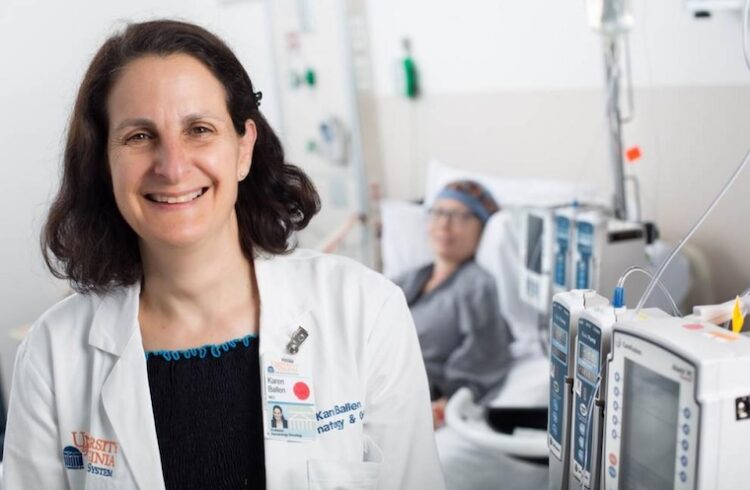
In the past two and a half years, UVa Department of Radiation Oncology has given hope to 100 patients who have come to the UVa Health System for specialized radiation treatment. Stereotactic body radiation therapy (SBRT) uses a high dose of radiation therapy that conforms as closely as possible to the patient’s tumor while avoiding healthy tissue.
Instead of several weeks of conventional radiation therapy, patients are comfortably placed in a Bodyfix system to minimize movement. There they receive three to five treatments of X-ray image-guided radiation over a one-week period. This treatment has low rates of toxicity and side effects.
Radiation therapy is the treatment of cancer using high levels of X-ray energy that can be delivered to tumors with customized treatments created for each patient. Stereotactic radiation therapy that utilizes 3-D imaging and gamma ray treatments has been successfully used for brain treatments for several decades and over 5,000 brain treatments have been delivered at UVA alone.
With this new application, SBRT, similar principles apply. Patients can have small tumors accurately identified and located within their body with precise coordinates. Using computerized planning, doctors can deliver high-energy x-ray beams precisely to the tumor targets though out the body.
Seventy percent of UVa’s SBRT cases have been lung SBRT cases for early and medically inoperable lung cancers or patients with one or two metastases (secondary tumors) of the lung. Many of the SBRT patients have come to UVa after trying other therapies for difficult-to-treat cancer. Other types of body tumors that may be treated in this manner include cancer in the liver, adrenal cortex, and spine.
“These exact and high-dose treatments require expertise in order to be delivered properly, and early data suggests SBRT can be more effective than standard radiation therapy, especially for early lung cancer patients. It certainly provides an excellent treatment option for patients who cannot undergo surgery to remove their tumor,” said Dr. Paul Read, director of the stereotactic body radiation therapy program at UVa. “Our patients overall have had very encouraging outcomes.”
He noted that UVa has several research grants and clinical protocols to continuously improve the treatment process with new types of MRI imaging. “This helps us understand how patient’s tumors and lungs move during respiration, which allows us to better customize the radiation treatments and to understand the biological effects of these high-dose treatments,” Dr. Read said.
SBRT treatment is convenient for patients with cancer and their families because it greatly reduces the number of trips to the hospital. Doctors can complete the treatment with just one planning session and three to five treatments that can be completed during one week, as compared with six to seven weeks of daily treatment, Monday through Friday. This shortened treatment course makes it possible for patients from distant or rural locations to come to UVA and complete state-of-the-art cancer care.
SBRT is not for everyone. “Because of the nature of the high dose therapy, we have adhered to very ethical case selection guidelines,” says Dr. Paul Read, associate professor who heads the SBRT program. “I am proud to be part of a program that is clearly helping patients who might have thought they had no further options and to advance cancer care along with other leading academic centers.”
Dr. Read and Dr. James Larner, Chair of the UVa Division of Radiation Oncology, have developed the UVa SBRT program, along with Dr. Ke Sheng and Dr. Stanley Benedict in the UVa Division of Medical Physics. They have worked with Dr. Jason Sheehan Associate Director of the Gamma Knife in Neurosurgery and Dr. David R. Jones, Division Chief of Thoracic and Cardiovascular Surgery, as collaborating surgeons to develop this program, and this depth of expertise has greatly contributed to this program’s successes.
SBRT can be delivered from many different treatment platforms, and at UVa this includes the Helical Tomotherapy system, which is a very sophisticated radiation delivery system that can deliver stereotactic radiosurgery treatments to any tumor sites in a patient’s body, after a CT scan precisely verifies the tumor target location.
Dr. Read has located a patient who will talk with media members about his experience. Please call 434-924-9241 to set up a meeting with the patient who has undergone SRT.


